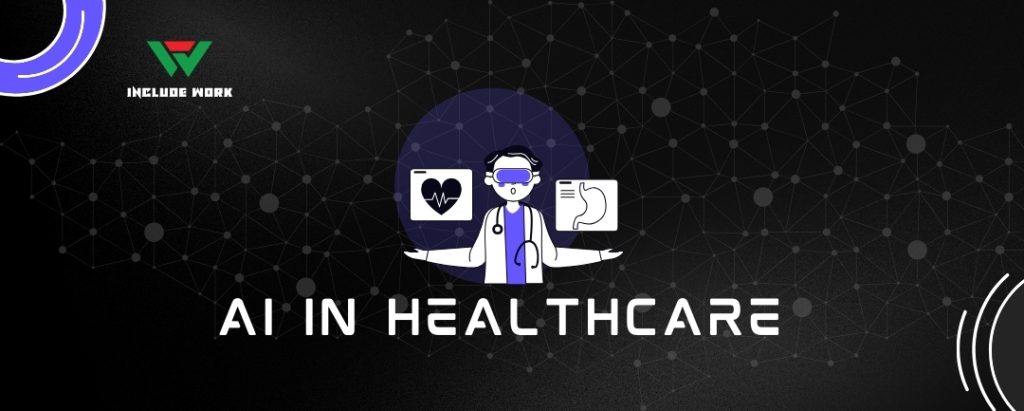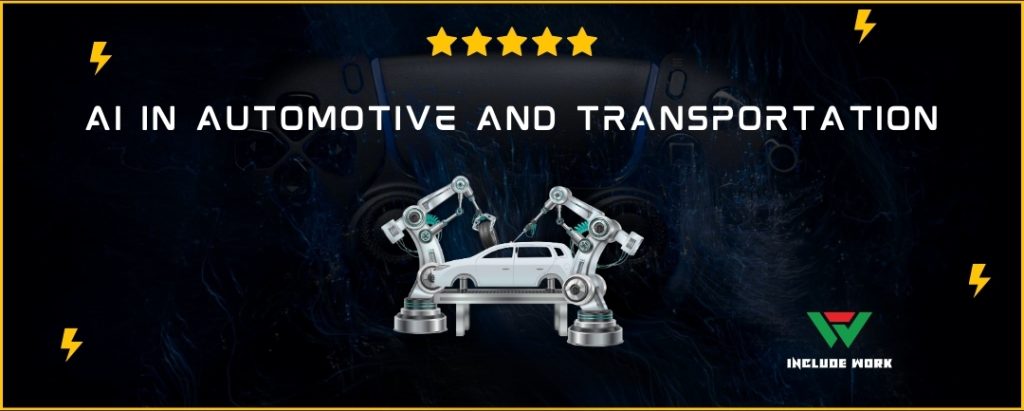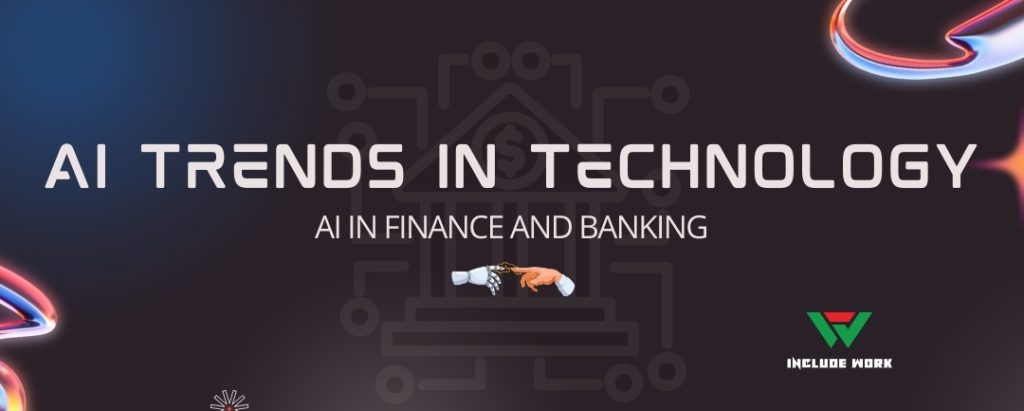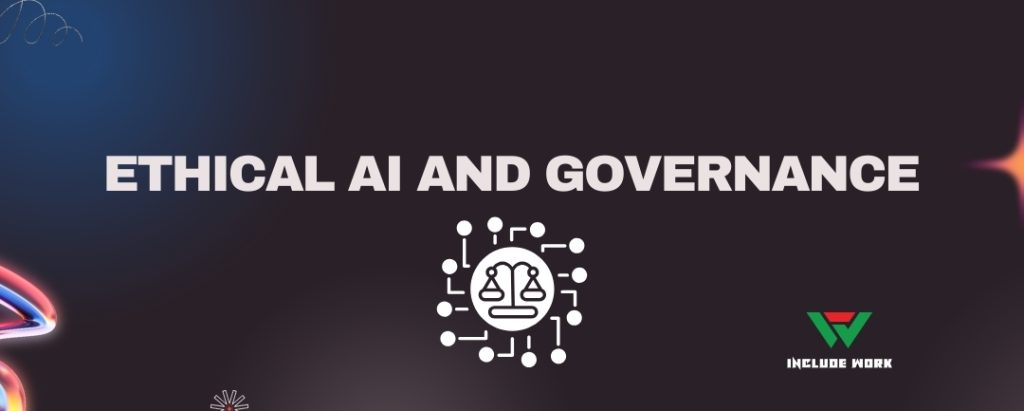As we delve into the current landscape of technology, one of the most pivotal forces shaping our digital era is undoubtedly Artificial Intelligence (AI). The impact of AI trends in technology spans various industries, revolutionizing how we interact with digital systems, enhance business operations, and even tackle everyday challenges. From algorithms that predict consumer behavior to systems that drive autonomous vehicles, AI is not just a tool but a transformative force.
Table of Contents
What makes AI particularly fascinating today? Let’s explore how AI’s innovative applications are not only solving complex problems but also creating new opportunities for efficiency and growth across multiple sectors. Whether it’s in healthcare, finance, or cybersecurity, AI’s integration is paving the way for more sophisticated, responsive, and personalized solutions. This exploration will give us a glimpse into the advancements that are setting the stage for the future of technology.
Advancements in AI Algorithms
The core of AI’s transformative power lies in the continuous evolution of its algorithms. These advanced algorithms are the building blocks that enable machines to learn from data, make decisions, and perform tasks that were traditionally done by humans. The development of more sophisticated AI models has led to significant breakthroughs in several areas:

Machine Learning (ML) and Deep Learning: Enhanced computational power and innovative network architectures have dramatically improved the accuracy and speed of machine learning models. Deep learning, a subset of ML, utilizes neural networks with many layers (hence ‘deep’) to analyze vast amounts of data. These technologies are at the forefront of AI, driving everything from voice recognition systems to personalized content recommendations.
Natural Language Processing (NLP): AI has made incredible strides in understanding and generating human language. NLP technologies enable machines to read, decipher, translate, and make sense of human languages in a way that is incredibly impactful for chatbots, translation services, and even sentiment analysis.
Predictive Analytics: AI algorithms are increasingly used to predict trends and behaviors. By analyzing past data, AI can forecast future events with remarkable accuracy, which is invaluable for industries like finance, marketing, and healthcare.
These advancements in AI algorithms have set the stage for more personalized, efficient, and intelligent systems that can adapt to and predict user needs and behaviors. As we look towards the future, the role of AI in enhancing and optimizing processes across different sectors continues to grow, promising even more groundbreaking applications and innovations.
AI in Healthcare
The integration of AI in healthcare is proving to be a game-changer, transforming various aspects of patient care, diagnostics, and treatment. Here’s how AI is making a substantial impact:

Improved Diagnostics: AI-powered tools are being used to analyze complex medical data such as X-rays, MRIs, and CT scans with higher precision and speed than traditional methods. These AI systems can identify patterns that may be invisible to the human eye, leading to earlier and more accurate diagnoses of diseases such as cancer, heart disease, and neurological disorders.
Personalized Medicine: AI is facilitating the shift towards personalized medicine, where treatments are tailored to the individual characteristics of each patient. By analyzing genetic data, lifestyle information, and other personal health data, AI can help predict how patients will respond to certain treatments, enabling doctors to choose the best possible treatment plan.
Operational Efficiency: AI is also enhancing operational efficiency in healthcare facilities. From managing patient flow to automating administrative tasks, AI technologies are helping healthcare providers optimize their resources and improve patient care by reducing wait times and operational costs.
Robot-Assisted Surgery: Surgeons are using AI-driven robots to perform complex surgeries with a high degree of precision. These robotic systems can minimize human error and enhance the surgeon’s capabilities, leading to better patient outcomes, reduced recovery times, and minimal surgical risks.
Virtual Health Assistants: AI-powered virtual health assistants are providing constant support to patients, reminding them to take their medications, scheduling their appointments, and even providing basic healthcare advice. This not only improves patient engagement and satisfaction but also supports healthcare providers by reducing the workload.
AI’s role in healthcare is expanding rapidly, offering exciting prospects for enhancing health outcomes and the overall efficiency of healthcare systems. The advancements are not just technical but deeply impactful, making healthcare more accessible, accurate, and personalized than ever before.
AI in Automotive and Transportation
Artificial Intelligence is steering significant innovations in the automotive and transportation industries, enhancing safety, efficiency, and sustainability. Here’s a closer look at the transformative role AI is playing:
Autonomous Vehicles: AI is the backbone of autonomous driving technology. Self-driving cars use AI algorithms to interpret sensor data, allowing them to navigate roads, recognize obstacles, and make real-time decisions. This not only promises to reduce human error in driving but also aims to make transportation more efficient and less congested.
Traffic Management: AI technologies are being employed to optimize traffic flow and reduce congestion in urban areas. By analyzing traffic patterns and real-time data from street cameras and sensors, AI systems can adjust traffic signals to enhance the flow, significantly reducing wait times and pollution.
Predictive Maintenance: AI is used to predict when parts of a vehicle need maintenance or replacement. This predictive capability not only extends the life of the vehicle but also ensures safer driving conditions by preventing breakdowns before they occur.

Enhanced Customer Experience: AI is transforming customer interactions in the automotive sector. From virtual showrooms that use AI to provide personalized car recommendations based on customer preferences to chatbots that handle inquiries and provide customer support, AI is making the customer journey smoother and more personalized.
Logistics and Supply Chain Optimization: AI is revolutionizing logistics by optimizing routes and improving supply chain efficiency. AI-driven logistics platforms can predict the best routes and methods for shipping, manage inventory more effectively, and even anticipate supply chain disruptions before they cause issues.
As AI continues to evolve, its potential to transform the automotive and transportation industries grows. The focus on enhancing safety, reducing environmental impact, and improving user experience is driving rapid adoption of AI technologies in this sector.
AI and Cybersecurity
In the realm of cybersecurity, AI is becoming an indispensable ally. As cyber threats grow more sophisticated, AI is stepping up to enhance security defenses, detect threats faster, and respond more effectively. Here’s how AI is making a difference:
Threat Detection: AI systems are trained to recognize patterns and anomalies that could indicate a security threat. By constantly analyzing network traffic and user behavior, AI can identify potential threats, such as malware or unusual access patterns, much quicker than traditional methods.
Automated Response: Once a threat is detected, AI can also automate responses. This might involve isolating affected systems, blocking suspicious IP addresses, or automatically patching vulnerabilities. These swift actions can prevent the spread of an attack and mitigate potential damage.
Phishing Prevention: AI is being used to combat phishing attacks, one of the most common cyber threats. By analyzing the content of emails and comparing them to known phishing examples, AI can identify and flag suspicious messages, reducing the risk of successful phishing attacks.

Enhancing Security Protocols: AI algorithms can evaluate and improve existing security protocols by analyzing their effectiveness and suggesting enhancements. This continuous improvement helps organizations stay ahead of cybercriminals.
Predictive Capabilities: AI’s predictive capabilities are used to forecast potential security incidents by identifying trends and patterns in data breaches and cyberattacks. This allows organizations to bolster their defenses in vulnerable areas before an attack occurs.
AI’s integration into cybersecurity not only boosts defense mechanisms but also brings a proactive approach to managing and mitigating risks. This evolution is crucial for keeping pace with rapidly advancing cyber threats and safeguarding sensitive data and systems.
AI Trends in Technology | AI in Finance and Banking
Artificial Intelligence is reshaping the landscape of finance and banking, introducing unprecedented levels of efficiency, personalization, and security. Here’s a look at how AI is revolutionizing this sector:
Fraud Detection and Prevention: AI systems are exceptionally effective at detecting fraudulent activities by analyzing transaction patterns and identifying anomalies that may indicate fraud. These systems learn from historical data and can adapt to new types of fraudulent tactics, offering a dynamic defense mechanism that evolves with the tactics of fraudsters.
Risk Assessment and Management: AI helps financial institutions assess and manage risk in real-time. By analyzing vast amounts of data, AI models can predict the likelihood of a loan default, assess credit risk, and even forecast market changes that could affect investments, enabling more informed decision-making.

Personalized Banking Services: AI is used to personalize banking services for customers. Based on individual spending habits and financial behavior, AI can offer tailored advice, recommend financial products, and optimize customer interactions to enhance the banking experience.
Automated Customer Support: AI-powered chatbots and virtual assistants are now common in banks and financial institutions. They handle a range of customer queries, from basic account information to complex loan applications, providing quick and accurate responses around the clock.
Algorithmic Trading: AI is also transforming the world of trading. Algorithmic trading uses AI algorithms to make high-speed trading decisions based on market data analysis, resulting in better execution of trades and maximized profits.
The integration of AI in finance and banking not only improves the efficiency and accuracy of services but also enhances customer satisfaction by providing more personalized and responsive services. As AI technology continues to advance, its potential to transform the financial landscape grows even more profound.
Ethical AI and Governance
As AI technologies become more pervasive, addressing ethical concerns and establishing robust governance frameworks is crucial. The focus on ethical AI and governance ensures that AI systems are developed and used in ways that are fair, transparent, and accountable. Here’s how the field is evolving:
Bias Mitigation: AI systems can unintentionally perpetuate or even amplify biases present in their training data. Efforts in ethical AI focus on developing methods to detect, mitigate, and eliminate biases. This includes using diverse datasets, applying fairness algorithms, and continuously monitoring AI systems to ensure they operate without discrimination.
Transparency and Explainability: There is a growing demand for AI systems to be transparent and explainable. This means making it easier for users to understand how AI decisions are made. Techniques such as model interpretability and open-source frameworks help demystify AI processes and build trust among users.

Data Privacy: Ethical AI also emphasizes the importance of data privacy and protection. AI systems must be designed to secure personal information and comply with data protection laws like GDPR. Privacy-enhancing technologies such as federated learning, where AI learns from decentralized data without compromising privacy, are gaining traction.
Regulatory Compliance: Governments and international bodies are increasingly formulating regulations to govern AI usage. Ethical AI involves ensuring that AI systems comply with these regulatory standards, focusing on aspects like consumer protection, safety, and ethical implications.
Human Oversight: Ensuring that AI systems do not operate in isolation but under human oversight is essential for ethical AI. This approach allows humans to intervene when necessary, especially in critical decision-making processes, thus maintaining control and ethical standards.
The movement towards ethical AI and robust governance frameworks is vital for fostering trust and accountability in AI technologies. By addressing these issues proactively, we can harness the benefits of AI while minimizing risks and adverse impacts.
AI in Education
Artificial Intelligence is revolutionizing the education sector by enhancing learning experiences, personalizing educational pathways, and improving administrative efficiency. Here’s a closer look at the transformative impact of AI in education:
Personalized Learning: AI enables personalized learning experiences that adapt to the individual needs, strengths, and weaknesses of each student. AI systems can analyze student performance and learning habits to tailor educational content and pace accordingly. This approach helps maximize learning efficiency and keeps students engaged.
Intelligent Tutoring Systems: These AI-driven systems provide students with one-on-one tutoring. By offering real-time feedback and personalized assistance, intelligent tutoring systems can help bridge educational gaps, especially in subjects where students may struggle.
Automated Grading: AI is increasingly used for automated grading of standardized tests and even essays. This not only saves time for educators but also provides students with quicker feedback on their work, allowing them to improve more rapidly.

Learning Analytics: AI tools collect and analyze data on student engagement, performance, and progress, providing educators with insights that can inform teaching strategies. This data-driven approach helps schools and teachers optimize their instructional methods and improve educational outcomes.
Virtual Reality (VR) and Augmented Reality (AR): AI-powered VR and AR tools are being used to create immersive and interactive learning environments. These technologies allow students to explore complex concepts and simulations in a way that is both engaging and impactful.
Administrative Automation: AI also streamlines administrative tasks such as scheduling, enrollment, and attendance management, allowing educational institutions to operate more efficiently and focus more resources on teaching and learning.
The integration of AI in education is not just about adopting new technologies but transforming the traditional educational paradigms. By making education more accessible, personalized, and efficient, AI is opening doors to innovative teaching and learning methods that could redefine educational standards worldwide.
AI in Retail and E-commerce
Artificial Intelligence is significantly enhancing the retail and e-commerce sectors by optimizing operations and transforming customer experiences. Here’s how AI is making an impact:
Personalized Shopping Experiences: AI leverages consumer data to personalize shopping experiences. By analyzing past purchases, browsing behaviors, and preferences, AI can recommend products that are more likely to appeal to individual customers, thereby increasing satisfaction and sales.
Inventory Management: AI systems optimize inventory management by predicting demand, managing stock levels, and identifying potential supply chain disruptions before they occur. This not only reduces the risk of overstocking or stockouts but also ensures efficient resource management.
Dynamic Pricing: AI enables dynamic pricing strategies where prices are adjusted in real-time based on factors like demand, competition, and inventory levels. This approach helps retailers maximize profits while remaining competitive in the market.

Customer Support Bots: AI-powered chatbots and virtual assistants provide 24/7 customer support, handling inquiries, processing returns, and assisting with purchases. This not only enhances customer service but also reduces operational costs by automating routine tasks.
Visual Search: AI-driven visual search technologies allow customers to search for products using images rather than text. By uploading a picture of a desired item, customers can find similar products available for purchase, enhancing the shopping experience.
Fraud Detection: AI improves security in online transactions by identifying and preventing fraudulent activities. By analyzing patterns and detecting anomalies, AI systems can flag suspicious transactions, protecting both the business and its customers.
AI’s integration into retail and e-commerce is creating more intuitive, efficient, and secure shopping environments. The use of AI not only drives business growth but also significantly improves the customer journey, making shopping more personalized and accessible.
AI in Entertainment and Media
In the realms of entertainment and media, Artificial Intelligence is playing a pivotal role in reshaping content creation, distribution, and audience engagement. Here’s an overview of AI’s transformative impact in this sector:
Content Personalization: AI algorithms analyze viewer preferences, habits, and feedback to tailor content recommendations on streaming platforms. This personalization enhances user satisfaction by delivering content that aligns closely with individual tastes.
Automated Content Creation: AI is also facilitating the creation of content, from music and videos to news articles and scripts. AI tools can generate creative content based on specific inputs and trends, aiding creators in delivering innovative and relevant material.
Enhanced Visual Effects: In filmmaking, AI is used to create and improve visual effects. AI-driven tools can automate the labor-intensive processes of editing and visual effects enhancement, allowing for more sophisticated and visually captivating productions.

Audience Analysis: AI tools provide deep insights into audience demographics, preferences, and engagement patterns. This data helps media companies make informed decisions about content development, marketing strategies, and distribution channels.
Voice Recognition and Command: AI-powered voice recognition technologies are transforming how audiences interact with devices and content. Voice commands can control playback, search for content, and even interact with characters in interactive media, providing a seamless and hands-free user experience.
Real-Time Translation and Subtitling: AI significantly contributes to breaking down language barriers in global media consumption. Real-time translation and automated subtitling allow audiences from different linguistic backgrounds to enjoy content without language constraints.
AI’s integration into entertainment and media not only enhances the creative process but also deepens audience engagement and expands access to content across diverse global markets. The technology’s capacity to understand and predict consumer behavior is key to delivering more compelling and personalized media experiences.
Sustainable AI
Sustainable AI is an emerging focus within the field, emphasizing the development and implementation of AI technologies in ways that support environmental sustainability and responsible resource management. Here’s how AI is contributing to these efforts:
Energy Efficiency: AI optimizes energy use in various industries, from manufacturing to residential buildings, by predicting energy needs and managing consumption more efficiently. This not only helps reduce carbon footprints but also cuts down on energy costs.
Smart Agriculture: AI technologies are revolutionizing agriculture by enabling precision farming. AI-driven systems monitor crop health, predict weather patterns, and automate irrigation and fertilization, leading to higher yields with fewer resources and reduced environmental impact.
Waste Reduction: AI is used to improve waste management by optimizing collection routes, sorting recyclables more effectively, and even predicting waste generation patterns. These improvements help minimize waste and enhance recycling processes.
Environmental Monitoring: AI assists in environmental conservation by monitoring ecosystems and wildlife. Through data analysis and pattern recognition, AI can identify environmental threats early, track biodiversity, and support conservation efforts.
Sustainable Supply Chains: AI enhances the sustainability of supply chains by optimizing logistics, reducing distances traveled, and minimizing unnecessary resource usage. This leads to more sustainable operations and a smaller environmental footprint.
Carbon Footprint Analysis: AI tools help companies and individuals calculate and understand their carbon footprints, encouraging more sustainable choices and practices.
By aligning AI development with sustainability goals, we can harness the technology’s power to address critical environmental challenges and promote a more sustainable future. The potential of AI to contribute positively to the planet, while continuing to drive innovation, highlights its dual role as a catalyst for both technological advancement and environmental stewardship.
Future Outlook
The future outlook for AI trends in technology is not just promising but transformative, with potential shifts that could redefine multiple sectors globally. Here’s what we can anticipate in the coming years:
Advanced AI Capabilities: As AI technology continues to advance, we can expect even more sophisticated AI capabilities. This includes better natural language understanding, more nuanced emotional AI, and algorithms that can solve increasingly complex problems across different domains.
Widespread Adoption in New Sectors: AI will likely penetrate further into sectors not traditionally dominated by technology, such as the arts, legal services, and non-profits. This widespread adoption could democratize AI benefits, making them accessible across different layers of society.
Integration of AI with Other Emerging Technologies: AI will continue to integrate seamlessly with other emerging technologies like blockchain, augmented reality (AR), and the Internet of Things (IoT). This convergence will foster new applications and innovations that could reshape how we interact with our environment.
Increased Focus on Ethical AI: As the impact of AI grows, so will the emphasis on developing it ethically. This means more robust frameworks for AI governance, greater transparency in AI processes, and heightened efforts to mitigate biases in AI systems.
AI in Mitigating Global Challenges: AI is expected to play a critical role in addressing global challenges such as climate change, healthcare disparities, and resource scarcity. By leveraging AI for good, its impact can extend beyond economic growth to meaningful societal contributions.
Autonomous Everything: The future might see an increase in ‘autonomous everything’—from vehicles and drones to entire manufacturing processes. This shift could lead to unprecedented levels of efficiency and new forms of human-machine interaction.
The trajectory of AI is set to soar, with endless possibilities that could fundamentally alter our daily lives, work, and play. As we step into this future, the focus will likely remain on harnessing AI’s potential responsibly and inclusively, ensuring that its benefits are widely distributed and its challenges effectively managed.
Conclusion
In conclusion, the exploration of AI trends in technology reveals a landscape rich with innovation and opportunity. From healthcare and finance to education and entertainment, AI’s profound influence is reshaping industries and enhancing human capabilities. As we navigate this evolving terrain, the commitment to ethical development and the focus on sustainable practices will be crucial in maximizing AI’s positive impact on society. The journey with AI is just beginning, and its future promises to be as dynamic as it is influential.
